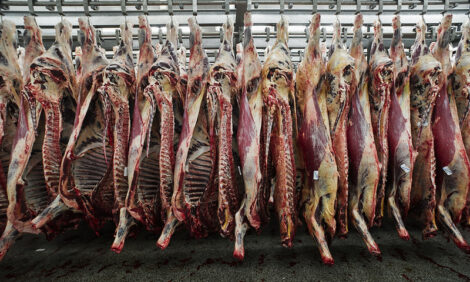



China corn imports decline on waning demand
Demand declining particularly in the livestock sectorThe forecast for 2024/25 (Oct-Sep) China corn imports is lowered 3.0 million tons to 10.0 million tons this month, according to the most recent USDA World Markets and Trade report.
If realised, corn imports for China will drop by more than half (from 23.4 million tons in 2023/24) and reach the lowest volume since 2019/20. Policy interventions to support declining domestic corn prices amid weaker consumption are the primary driver of China’s dramatic drop in corn imports.
Falling prices for corn reflect slowing demand growth from end-users, particularly the livestock sector, which is grappling with weaker consumer spending. Since December 2023, China’s National Bureau of Statistics (NBS) reports a more than $53/ton (~400 CNY/ton) decline in market prices for corn.
Weaker income growth and declining prices for homes, a significant source of wealth for China’s middle class, have both curbed disposable incomes. This is particularly acute in the urban areas that drive livestock product demand. NBS reports that growth in median per capita disposable income for urban residents in 2024 was 4.6% – only 0.2% higher than the 4.4% in 2023, and significantly lower than the 7.8% growth reported in 2019.
Weaker spending is reflected in falling market prices for beef and pork, which combined cover more than 70% of China’s meat consumption. Market prices for beef, a meat long considered to signal Chinese buyers’ rising appetite for luxury, have fallen to the lowest levels since 2019. Pork, regarded as a cultural staple and more widely consumed, has seen significant interventions such as purchases of meat for state reserves. Additionally, the Chinese government revised the optimal sow herd size lower to balance supply against current demand. Lower meat prices are forecast to cause live cattle and swine inventories in China to decline from 2024 to 2025.
As consumer pullback keeps livestock margins tight, demand for corn has slowed, posing a risk of further revenue loss for China’s corn farmers. China is attempting to support domestic prices with a supply side approach. Reports from FAS/Beijing note that China has asked buyers to limit imports, while SinoGrain – the holder of state grain reserves – has stopped auctions of imported corn and raised purchases of domestic corn for its reserves7.
To date, supply side efforts via reduced imports have not reversed corn price declines. Fourth quarter producer price index for corn – correlated with the key harvest season in China – fell by more than 16% year over year, signalling a continuation of structural issues in the market. Until consumption rebounds, China is likely to play a reduced role in global corn trade through the end of 2024/25.



